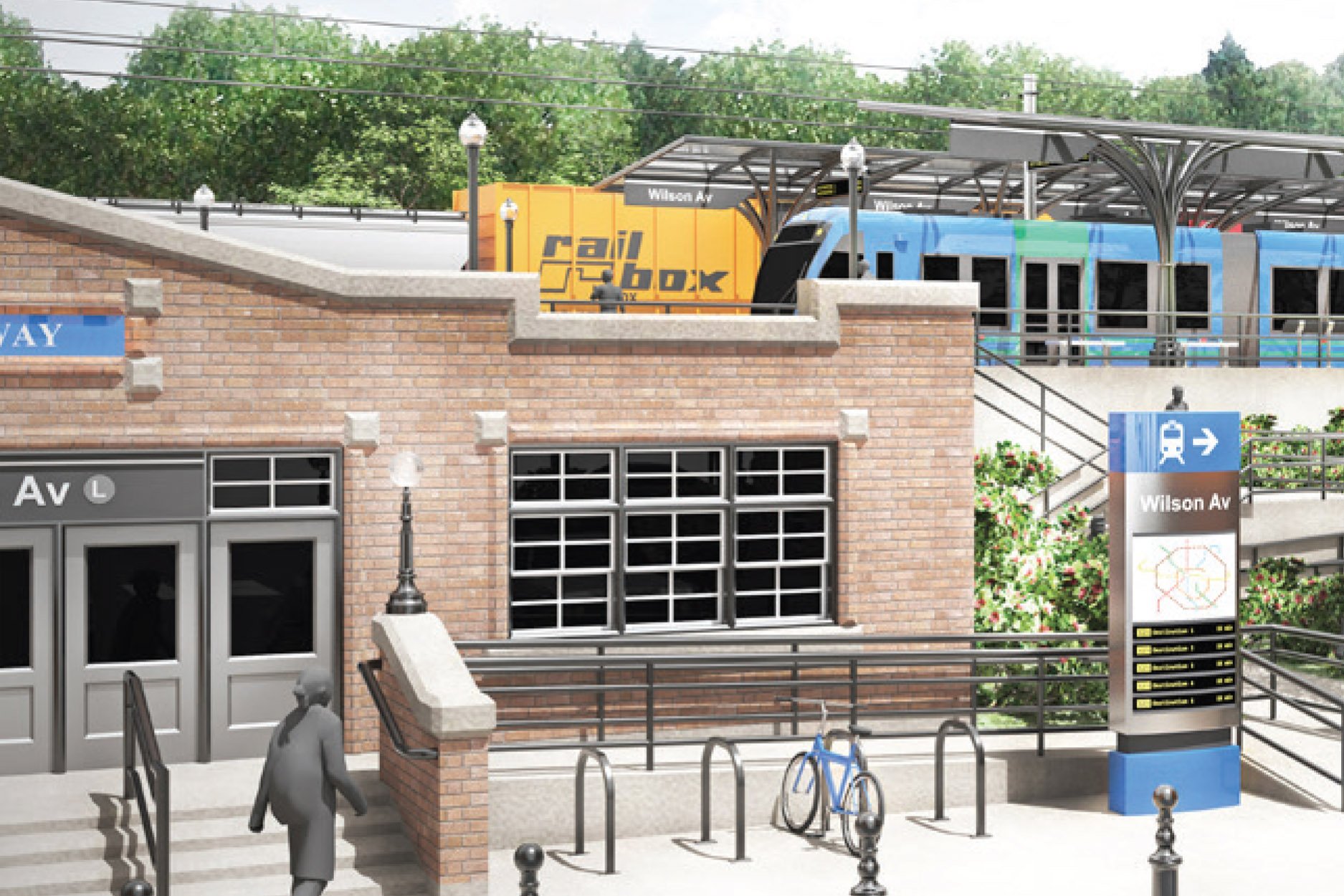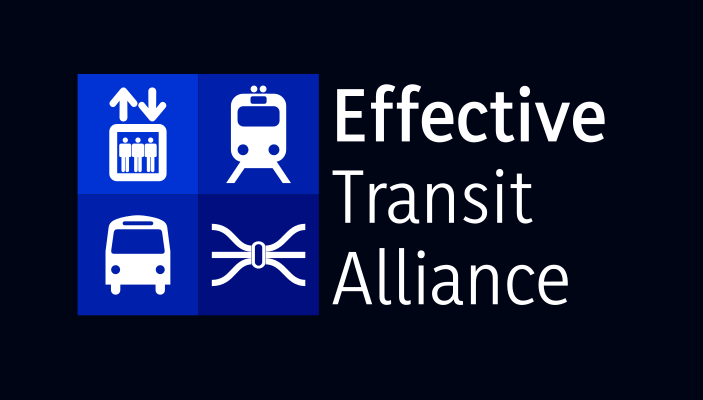
Interborough Express Done Right
June 27, 2023
We are currently expanding this page into a series of longer reports. Our first report, on the importance of the All Faiths Tunnel, is available now.
Introduction
The under-development Interborough Express (IBX) is one of the largest and most important transit projects in the greater New York region right now. By taking advantage of the existing Bay Ridge Branch, a lightly-used, completely grade-separated freight line, the project will create an all-new rail transit link between Brooklyn and Queens. The case for the line is clear: approximately 900,000 people and 260,000 jobs already lie within half a mile of the proposed route, as do the entirety of some 129,000 existing daily commutes. Perhaps more directly, the IBX would also create connections between 16 separate subway lines in both Brooklyn and Queens, as well as with the Long Island Rail Road’s Atlantic Branch. The new route will essentially create a circumferential transit line across the boroughs, opening up entirely new ways of traveling across New York City. If executed well, the Interborough Express promises to be a transformative project, massively speeding up travel while also enabling new types of trips between the boroughs. It is critical, however, to make the correct decision now, and not cut corners on a line that will serve generations of New Yorkers. This means building a line that is completely grade separated, constructing short, in-system connections to existing subway stations, and ensuring that trains will run frequently—at worst, every five or six minute off-peak.
In early 2023, the MTA selected light rail as its preferred mode for the IBX. While ETA had earlier advocated for the use of conventional rail, light rail is a suitable choice of transit technology for this corridor, and superior to the bus option that the MTA considered. For example, while an articulated "bendy" bus can carry about 110 riders, one long light rail vehicle can hold 300, all driven by one operator.
Far more important than the choice of mode, however, are the details of its implementation. As a circumferential route, success for the IBX will particularly rely on service frequency, service reliability, and the ease of transfer it can provide to other services. To that end, it is critical that the new line operate entirely separate from car traffic on its own right-of-way, and that interchange stations with the subway be built to enable fast, direct, enclosed connections. Right now, however, ETA is deeply concerned with the MTA’s current plans to have trains run along the street in certain segments, as well as its lack of clarity about the importance of direct transfers to subway and rail at connecting stations. In particular, the current plan to run trains along the street near All Faiths Cemetery should be replaced with a fully grade separated alignment.
Executed well, the Interborough Express promises to be a transformative investment for New York. Let’s make sure we build it right the first time.
The case for Interborough
Today, a significant percentage of riders looking to travel between Brooklyn and Queens must either travel via Manhattan, or ride local buses along surface streets. As a result, of the 16,000 commutes between Brooklyn and Queens that take place in the half-mile strip around the IBX corridor, half are undertaken by car. By contrast, only 15 percent of the 85,000 daily commutes from this area to Manhattan are done by car. This demonstrates a strong demand for additional rail transportation in Brooklyn and Queens—especially transit that is reliable, high-quality, and free of street conflicts.
Full Grade Separation: The All Faiths Tunnel
Right now, the biggest threat facing the IBX project is street running. Any time trains are forced to run on a busy street, travel time increases, and worse, reliability on the entire line can plummet—even for passengers traveling entirely on grade-separated sections. At the moment, the MTA believes it must run on the street in Middle Village, Queens along the busy Metropolitan Avenue, even though a short and inexpensive tunnel would make this circuitous trip entirely unnecessary.
In Middle Village, the current infrastructure narrows to two tracks wide at a tunnel near the All Faiths Cemetery at Metropolitan Avenue and 69th Street. However, the open cuts that hold the current freight tracks at either end are around 60’ wide,with the existing tracks taking up just half of the right-of-way. This is plenty of space for four tracks: for example, Metro-North’s Park Avenue tunnel approach measures 55’ wide. The only thing standing between the IBX and full grade separation is the need to widen the existing 520’ tunnel from two to four tracks, as well as to create a short new bridge over the freight tracks just south of it. This project, which would take place under a parking lot, landscaping, and a portion of a mausoleum in the cemetery, can be built with shallow cut-and-cover methods, rather than the more complex deep boring methods used under major streets to avoid disturbing residents. The mausoleum would have to be either reinforced from below or moved, but this would be minimally disruptive and likely feasible for low tens of millions of dollars.
By eliminating street conflicts at Metropolitan/69th, end-to-end travel times on the IBX would be cut dramatically. The currently proposed design would require trains to ramp up to street level and then travel in mixed traffic for around a half mile, adding several minutes to the journey while harming service reliability. On the street, trains would have to obey the local speed limit of 25 mph, wait for traffic lights and pedestrians, and make five sharp turns. Metropolitan Avenue is one of the few continuous east-west streets through this section of Queens, and as such, handles heavy traffic. In short, building this one short segment of tunnel would improve speed, dramatically increase reliability, and would facilitate future frequency increase and cost savings through automation.
South of All Faiths Cemetery, some of the right-of-way is taken up by a 1’ diameter fuel pipeline, which passes under several residential streets before reaching LaGuardia Airport. The pipeline also travels through a disused trackway in the East New York tunnel. Even at New York costs, a definitive solution to this problem–reactivation of the trackway for IBX trains and a new pipeline dug with a micro tunnel boring machine or pipe jacking–should be within reach for a $10-millions figure.
In East New York, there is already a tunnel with room for two dedicated passenger tracks and two dedicated freight tracks. While the feasibility study claims that the East New York tunnel trackways at 14’ wide are too narrow for standard (10’ 6”) New York regional rail trains, the Park Avenue tunnel accommodates such trains even though it has segments measuring only 13’ wide - and light rail vehicles are almost two feet narrower than commuter trains. Design exceptions for such situations are routine for urban rail projects worldwide. Los Angeles’s experience with grade-separating an intersection after the fact on the Crenshaw Line strongly suggests that ensuring complete grade separation for IBX now would save money in the long term.
Integration: Stations & Fares
Every large mass transit system relies on transfers between lines. Since it is impossible to give every passenger a one-seat ride to their destination, most travelers will need to transfer at some point in their journey. This is particularly true of lines that miss the biggest destinations, like IBX. A subway line to Midtown Manhattan can live entirely on traffic to Midtown; but IBX, serving neither Manhattan nor the biggest outer-borough job centers like Downtown Brooklyn, will live or die based on the quality of its integration with the rest of the system.
Therefore, the MTA should ensure that transfers are short and friction-free. They should not require passengers to walk on the street; there should be in-system transfer corridors, particularly at the busiest stations such as Jackson Heights (E/F/M/R/7), Broadway Junction (A/C/J/Z/L), Brooklyn College (2/5), Bay Ridge Ave (R), and 18 Av/Av I (F). Experience in both New York and other cities demonstrates that lengthy, poorly-designed transfers greatly decrease the number of people using them. What’s more, station locations should be chosen to minimize transfer distance, which may include having two closely-spaced stops in East New York for both LIRR and subway connections.
Under no circumstances should transfers require paying a separate fare. The IBX fare system must be completely fare integrated with the subway; a subway-IBX trip must cost $2.75 as the system charges for any analogous subway-bus journey. The MTA can accomplish this goal by placing faregates at IBX stations, treating IBX as a subway line that just happens to run with a different technology. IBX could also utilize proof-of-payment (POP) without faregates, like New York’s Select Bus Service or light rail in many other cities. If the MTA chooses this option, however, it must ensure that the system is clear, usable, and understandable, for both existing riders and new users; many cities offer free transfers between gated and non-gated systems. Ultimately, however, the exact mechanism for collecting fares is much less important than ensuring it is fully integrated into existing subway and bus transfers.
Finally, in order to improve service in the transit deserts of Flatlands and Canarsie, a station at Ralph Avenue and/or Rockaway Avenue should be considered.
Construction Costs
The current IBX project would cost about $400 million per mile, which is very high for a project in existing right-of-way. The Transit Costs Project recently released its final report synthesizing findings from around the world about factors that influence construction costs. Its material contains actionable strategies the MTA and its partners can take now to adapt their project management processes for higher productivity. This is not about reducing transit expenditures; on the contrary, lower construction costs—which are tightly correlated with faster timelines—will build support for additional public spending on transit expansion. Seattle, Philadelphia, and Austin have all recently scaled back major transit projects due to cost explosions. IBX currently contains indirect connections to the subway lines it crosses; even slightly higher construction productivity would likely unlock in-system passageways. Cost control would also simplify the process of eventually converting IBX from light rail to conventional rail if ridership rises to demand it in the future.
The IBX would be a transformative project if built correctly with high frequencies, high capacity, and free direct transfers with existing transit infrastructure. The MTA’s inefficient capital construction practices could potentially threaten all three of these characteristics through the misguided cost-saving measures of congested and speed-restricted street-running and inadequate subway connections. The MTA should aim to cut costs not by reducing project quality, but instead by adopting international best practices for building useful transit affordably.
Conclusion
In short, the Interborough Express is a project with the potential to transform transit in Brooklyn and Queens, allowing easy connections between multiple subway lines and opening up new modes of travel along a corridor that is poorly served today. For all its promise, however, the real world performance of the IBX will rise and fall on how it is built and operated.
For the line to reach its potential, the MTA must ensure that the entire route is grade separated by building the short tunnel through All Faiths Cemetery. It must also ensure that not only does the service use an integrated fare system with free transfers to and from the subway, but it must ensure wherever possible that stations offer a quick, easy, dedicated connection for transferring passengers.
These small changes, while perhaps adding slightly to the project’s difficulty, will greatly magnify its usefulness for future generations of New Yorkers.

